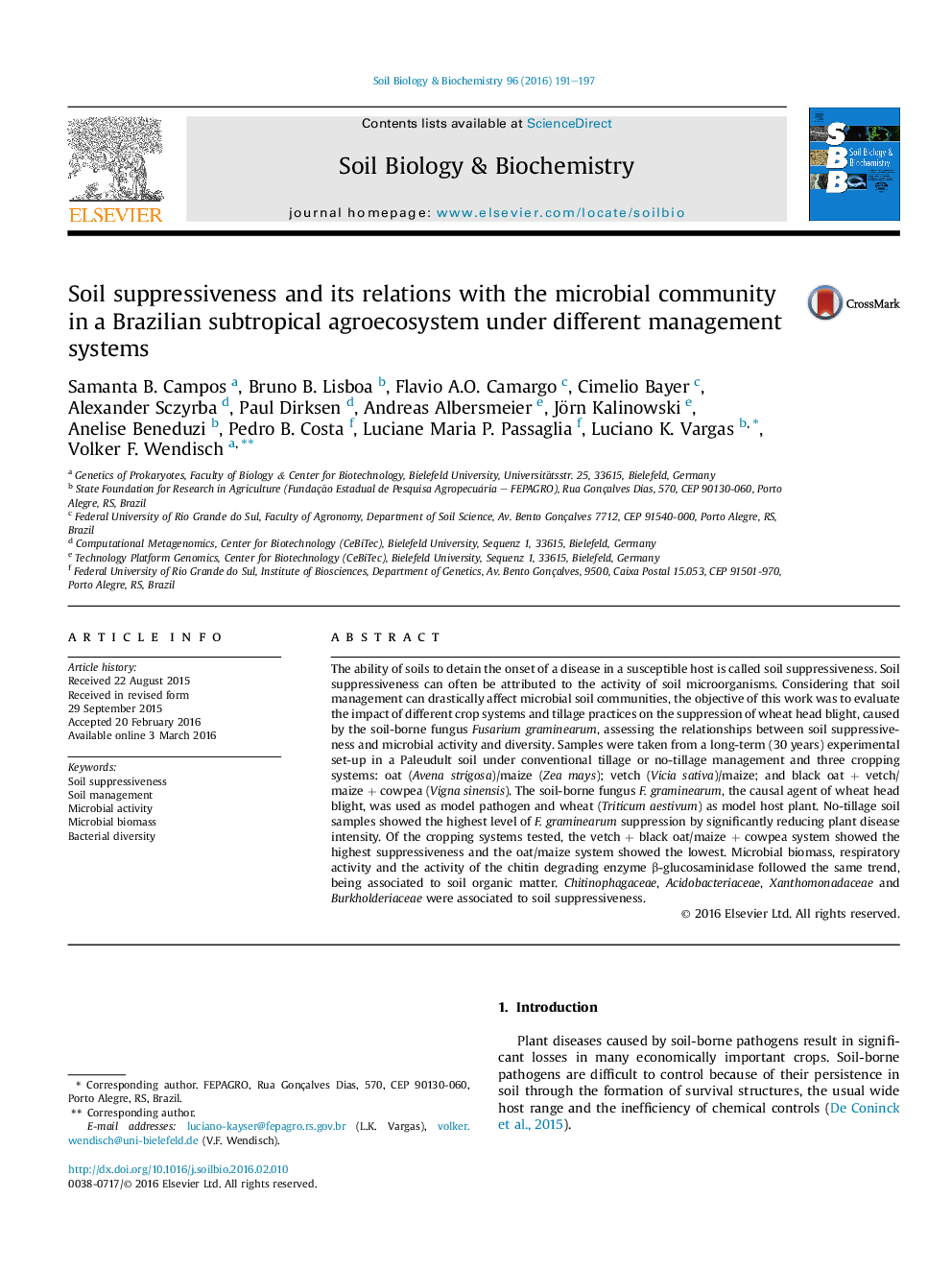| Article ID | Journal | Published Year | Pages | File Type |
|---|---|---|---|---|
| 2024362 | Soil Biology and Biochemistry | 2016 | 7 Pages |
Abstract
The ability of soils to detain the onset of a disease in a susceptible host is called soil suppressiveness. Soil suppressiveness can often be attributed to the activity of soil microorganisms. Considering that soil management can drastically affect microbial soil communities, the objective of this work was to evaluate the impact of different crop systems and tillage practices on the suppression of wheat head blight, caused by the soil-borne fungus Fusarium graminearum, assessing the relationships between soil suppressiveness and microbial activity and diversity. Samples were taken from a long-term (30 years) experimental set-up in a Paleudult soil under conventional tillage or no-tillage management and three cropping systems: oat (Avena strigosa)/maize (Zea mays); vetch (Vicia sativa)/maize; and black oat + vetch/maize + cowpea (Vigna sinensis). The soil-borne fungus F. graminearum, the causal agent of wheat head blight, was used as model pathogen and wheat (Triticum aestivum) as model host plant. No-tillage soil samples showed the highest level of F. graminearum suppression by significantly reducing plant disease intensity. Of the cropping systems tested, the vetch + black oat/maize + cowpea system showed the highest suppressiveness and the oat/maize system showed the lowest. Microbial biomass, respiratory activity and the activity of the chitin degrading enzyme β-glucosaminidase followed the same trend, being associated to soil organic matter. Chitinophagaceae, Acidobacteriaceae, Xanthomonadaceae and Burkholderiaceae were associated to soil suppressiveness.
Related Topics
Life Sciences
Agricultural and Biological Sciences
Soil Science
Authors
Samanta B. Campos, Bruno B. Lisboa, Flavio A.O. Camargo, Cimelio Bayer, Alexander Sczyrba, Paul Dirksen, Andreas Albersmeier, Jörn Kalinowski, Anelise Beneduzi, Pedro B. Costa, Luciane Maria P. Passaglia, Luciano K. Vargas, Volker F. Wendisch,
